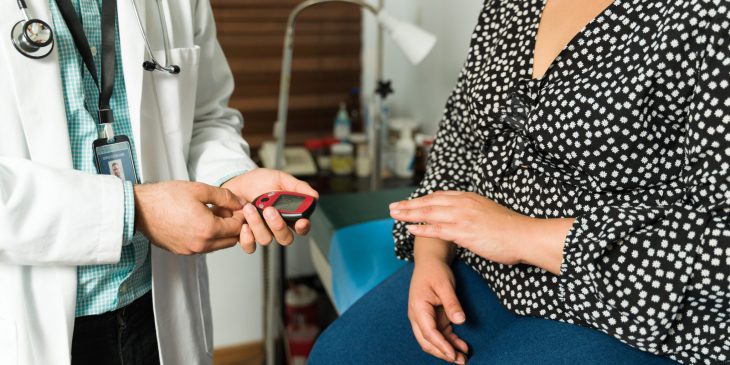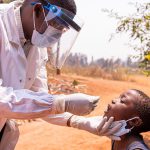Adolescents who know or feel that they are at greater risk of diabetes do not report engaging in more risk-reducing health behaviors — such as healthy eating and physical activity — according to a recent study conducted by researchers at the University of Pittsburgh School of Medicine.
Published in JAMA Network Open, the study urges clinicians to recognize that adolescents most at risk for prediabetes and youth-onset Type 2 diabetes often have the greatest barriers to engaging in a healthy lifestyle.
“For adolescents, unlike adults, awareness and perception of diabetes risk seem to be insufficient to change health behaviors,” said Dr. Mary Ellen Vajravelu, assistant professor of pediatrics at Pitt. “While it may seem helpful to inform patients of risk, we found that physical activity was actually lower among adolescents who felt they were at risk for diabetes compared to those who did not.”

Dr. Mary Ellen Vajravelu
Youth–onset Type 2 diabetes is a serious disease that puts young people at risk of long-lasting complications, such as heart disease, kidney disease and nerve damage. With cases on the rise worldwide, clinicians like Vajravelu are working to identify youth with prediabetes — a condition where blood sugar is higher than normal — and develop interventions before it develops into full-blown Type 2 diabetes.
For adolescents with prediabetes, lifestyle changes are the most effective way to reduce the chance of developing youth-onset Type 2 diabetes. While past studies have shown that adults are more likely to engage in risk-reducing behaviors after learning that they are susceptible, how adolescents respond to knowledge of their diabetes risk — and the barriers that could affect behavioral change — remained unknown.
Vajravelu and her colleagues analyzed data from the U.S. National Health and Nutrition Examination Survey involving participants ages 12 through 17 who are overweight or obese and who either suspected or were told by a clinician that they were at risk for diabetes.
Surprisingly, they found that adolescents who knew or felt that they were at greater risk of diabetes watched more TV, had lower physical activity and did not attempt weight loss or healthy eating. The findings suggest that knowledge of risk alone is not enough to motivate youth to engage in risk-reducing behaviors.
To understand why, the researchers also looked at potential barriers, including household food security, health insurance, health care access, income and household size. They found that economic disadvantage was associated with lower physical activity. In contrast, adolescents in larger households consumed more home–cooked meals and watched less TV.
“The big takeaway from this study is that we must do more than tell adolescents that they are at risk for diabetes if we expect them to change,” said Vajravelu. “By advocating for policy change and creating lifestyle and school programs, we hope that adolescents at risk will be able to engage in healthier habits.”
Vajravelu and her colleagues are also studying behavioral economics-based strategies to encourage adolescents to participate in more physical activity. By evaluating strategies such as financial incentives, goal setting and supportive text messaging, researchers aim to find ways to successfully support adolescents to engage in healthy lifestyles.








